Description of chickpea and its cultivation

Chickpea is a unique product with a rich history and pleasant taste.... The fruits of this plant can be eaten raw, or used to prepare various dishes. Therefore, many gardeners are happy to grow chickpeas in their area.

What it is?
This plant is also known as lamb chickpeas, nakhat, Uzbek peas or walnuts. It is herbaceous and belongs to the legume family. Its closest relatives are soybeans, beans and peas. All of these plants are highly regarded for their beneficial properties and delicious taste. Chickpeas are especially often added to their diet by vegans and vegetarians.
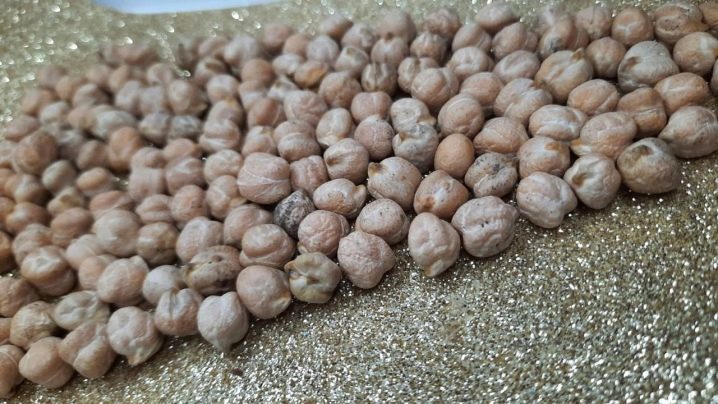
Chickpeas were first discovered more than 7,500 years ago. It happened on the territory of the East. At the same time, the ancient Egyptians, Romans, and also the Greeks used it as food. It was highly appreciated not only for its pleasant taste, but also for its nutritional value and usefulness. In Russia, chickpeas appeared about 200 years ago. Now anyone can grow this plant in their own garden.
This plant can be both perennial and annual. Its foliage is oval. Flowers of such plants are solitary. They can be white or purple-red. Ripe fruits are in small pods that resemble cocoons in their appearance. One "box" usually contains 2-3 fruits. The seeds themselves are round in shape. However, they are slightly curved. It is because of this that the plant is sometimes called lamb peas.
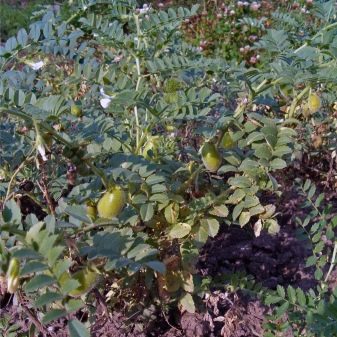

Popular species and varieties
Having decided to plant chickpeas on his site, the gardener should choose a suitable variety for planting. The most popular are the following varieties of this plant.
-
Krasnokutsky. It is a fairly large plant. Bushes grow on average up to 30-40 centimeters. They are voluminous and branched. The bob is usually found on the bottom of the bush. This type of chickpea is ideal for cooking. It contains a lot of protein and various useful microelements. This chickpea variety grows well even in drought conditions.
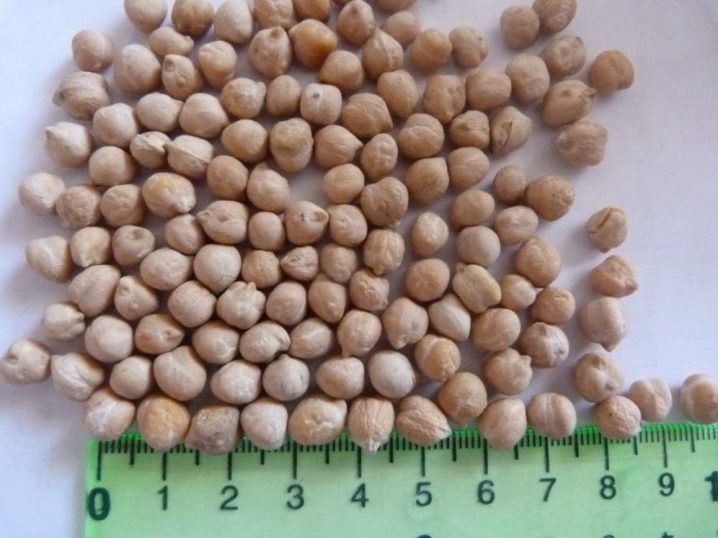
- "Sovkhozny". This type of chickpea ripens in 90-100 days. Its seeds are slightly wrinkled. Their color is brown-red. The cultivation of such chickpeas is not difficult.
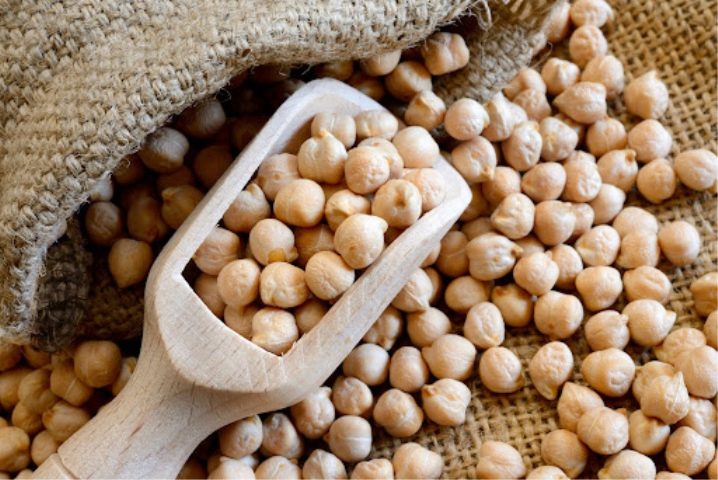
- "Anniversary". This type of chickpea has a high yield. Therefore, many gardeners prefer to grow this particular variety of chickpeas at home. The fruits of such plants are easily recognizable by their light pink color.
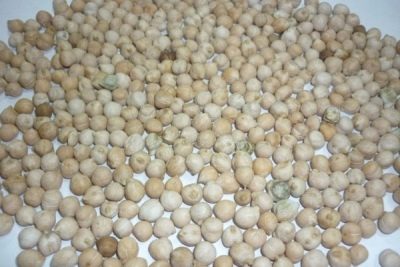
- "Budjak". Such chickpeas are early maturing. Usually the fruits of this variety are harvested in early July. The grains are distinguished by their beige color and relief surface. They are high in protein.
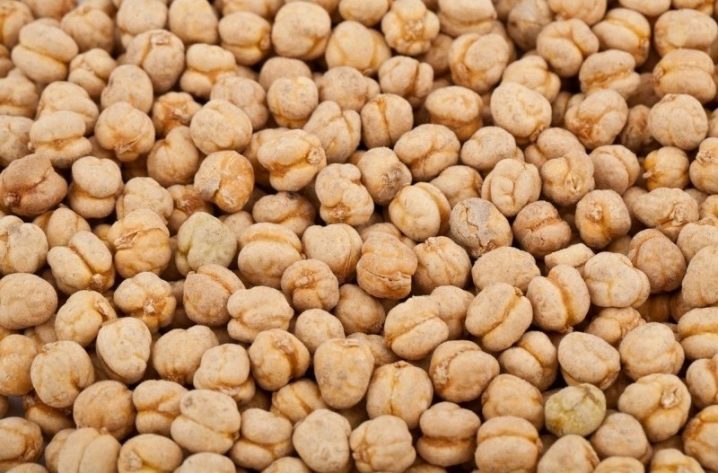
- Desi. This variety of chickpea is popular in arid regions. The fruits of this variety are light brown in color and are ideal for the production of chickpea flour.
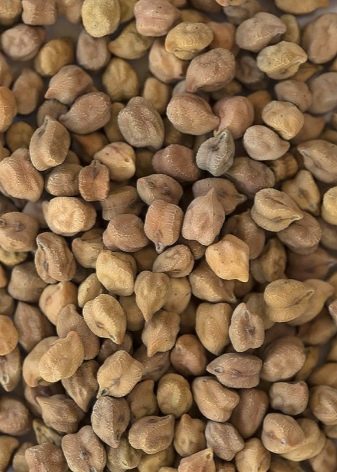
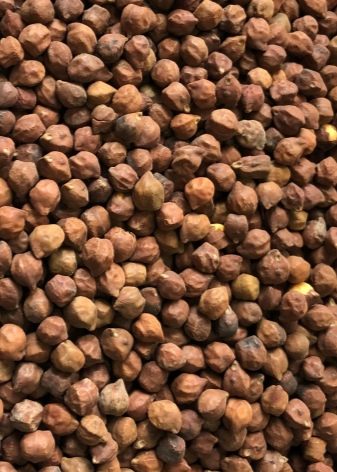
All of these plants are easy to find commercially. These are sold at most gardening stores. You can plant not one, but 2-3 varieties of chickpeas in one area. They all go well with each other.
Preparing for landing
Chickpea is a thermophilic plant. But it tolerates the cold well. Therefore, it can be planted in mid-spring. The exact time depends on the characteristics of the local climate. So, in Crimea and Belarus, chickpeas can be planted in early April. In central Russia and in the Moscow region, this is done at the end of the month. In Siberia and the Urals, chickpeas are planted in May.For planting in cold regions, it is recommended to pre-grow chickpeas.

Priming
The soil for planting chickpeas should be prepared in the fall. When choosing a place, you should pay attention to the following points.
-
Illumination... Since chickpeas are a thermophilic plant, they should be planted in areas that are well lit by the sun. Planting plants in the shade is not worth it. This leads to the fact that the chickpeas develop slowly and look very bad. If there is no place for legumes in sunny areas, chickpeas should be placed at least in partial shade.
-
Crop rotation and neighbors. Chickpeas can be planted after almost any plant. The main thing is that the site is previously cleared of weeds. It is important to remember that chickpeas should not be grown in the same area for several years in a row. This will lead to the fact that the plants will often hurt and bear fruit worse. For the same reason, it is not planted after the sunflower. The best neighbors for chickpeas will be related crops. You can plant mung beans and peanuts next to it. Instead, a variety of legumes can be placed on the chickpea site. It is also worth noting that chickpeas are an excellent precursor for winter wheat. Very often, these two crops are grown on the same plot for several years in a row, constantly alternating.
-
Soil quality. It is worth planting chickpeas on high-quality fertile soils. If the soil is too heavy, mix it with fine gravel or sand. Ash or chalk should be embedded in acidic soil in the fall.
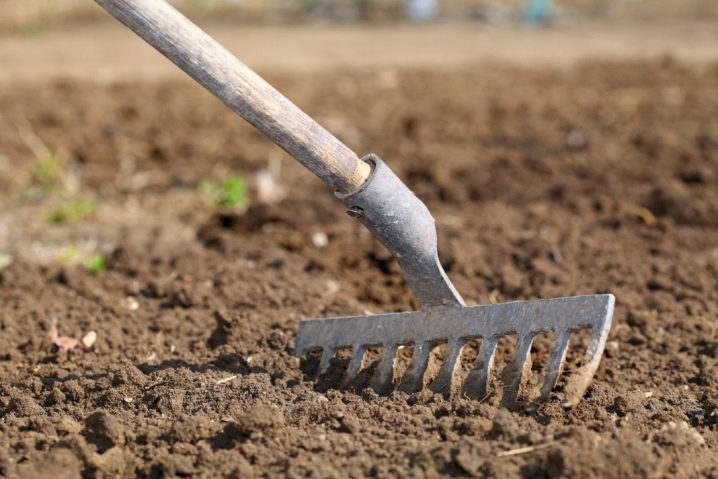
Since the fall, the site chosen for planting chickpeas must be cleaned of plant residues, dug up and fed. The quality of the cultivation of the land directly affects the yield of this plant.
Universal fertilizers can be applied to the soil. The main thing is that they contain a large amount of nitrogen. This component contributes to the rapid build-up of green mass. Instead of purchased fertilizers, gardeners often use rotted manure or compost.

Planting material
For sowing chickpeas, you can use both purchased material and grains harvested at home. The main thing is that the seeds are of high quality.
Before planting chickpeas, you can pre-prepare it. It won't take too long. The seed preparation process consists of the following steps.
-
Calibration... First of all, the planting material must be sorted out. Choosing large grains for planting is worth it. They must be healthy. Planting material with traces of mold or rot will not yield a good harvest. Next, the selected seeds must be placed in a container with a saline solution. For its preparation, a tablespoon of salt is diluted in a liter of water. Chickpeas are placed in this liquid for several minutes. Further, those seeds that have floated up are thrown away. The rest of the material is washed under running water.
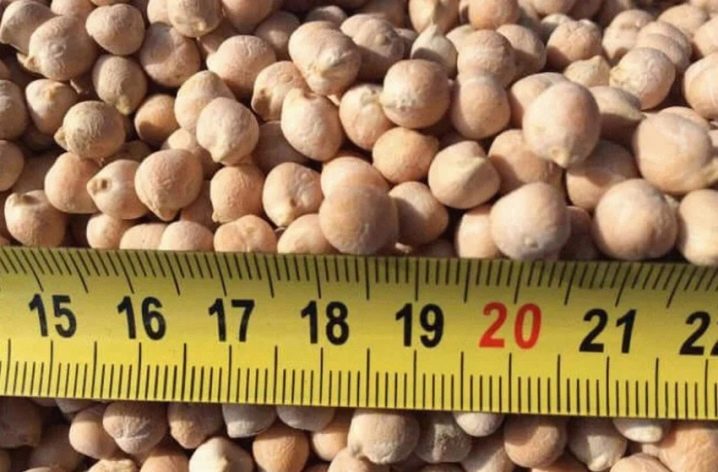
- Soak... Next, the planting material is placed in an empty container and filled with clean water. In this form, the chickpeas are left overnight. After a few hours, the water is drained. This liquid can be used for watering plants. Germinated seeds must be washed and sent to a dark place for a few more hours. Then the soaking procedure must be repeated 1-2 more times. At this time, sprouts will already appear on the surface of the seeds. To make the planting material stronger and healthier, it can be soaked in a biostimulator. This procedure will also help speed up the process of emergence of the first shoots on the site.
The main thing is that the solution is not too concentrated. This will damage the kernels.
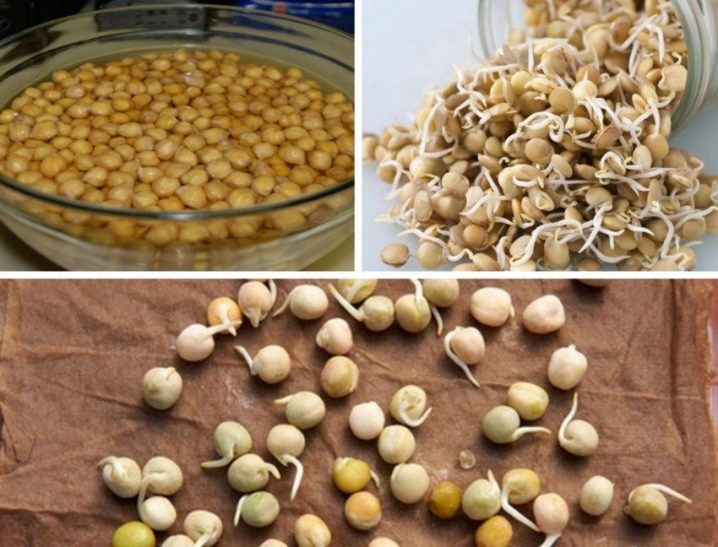
- Drying... Next, the chickpeas need to be washed and spread out on a flat surface. Dried seeds can be stored for several days.
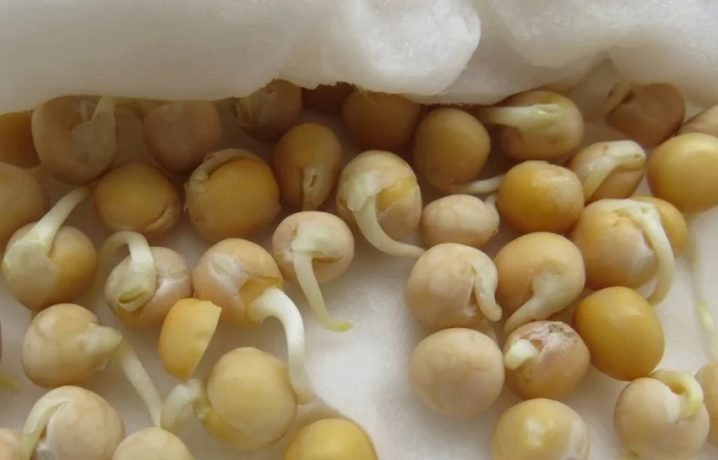
- Disinfection... Before sowing, chickpeas, like peas or beans, are recommended to be disinfected. To do this, it is placed in a container with a weak solution of potassium permanganate for 10-15 minutes. After processing, the planting material is dried again.
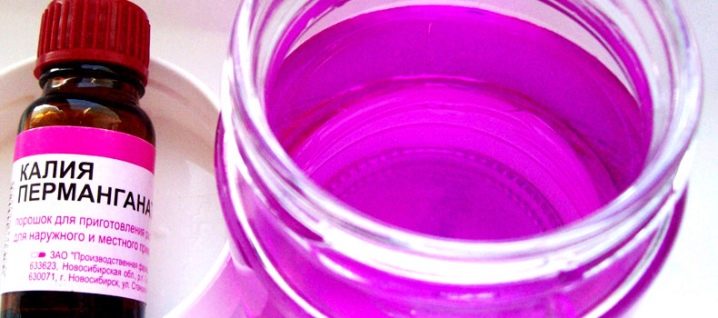
Seeds prepared in this way can be planted immediately in your country house.
How to plant?
In open ground, you can plant both chickpea grains and grown seedlings.
Seeds
Most often, gardeners prefer to sow seeds directly into the open ground. In nature, chickpeas reproduce in this way. People living in warm regions and in central Russia do not have to worry about the condition of the grains.
Having decided to plant chickpeas in his area, the gardener should properly prepare the furrows. It is recommended to place the rows at a distance of 50-70 centimeters from each other. The plantings should not be too thick. This will lead to the fact that plants will get sick more often and suffer from attacks of various pests. As a rule, the seeds are sown at a distance of 8-10 centimeters from each other. In this case, the depth of the grooves should be within 5 centimeters.
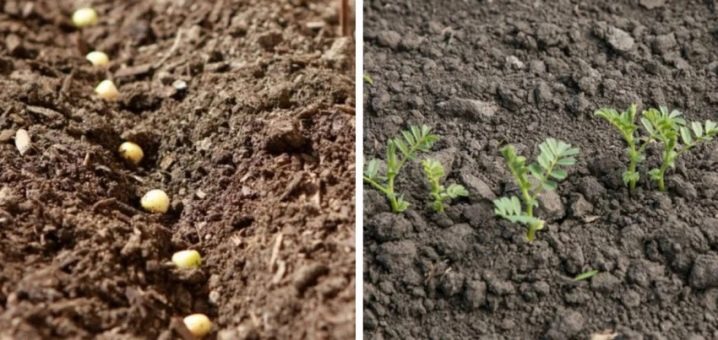
Before sowing chickpea, the beds can be watered. In this case, it is not necessary to soak the grains before planting. If desired, they can be additionally treated with dry wood ash, then the plants will be additionally protected from pests.
Having sown seeds in the grooves prepared in advance, they need to be covered with a thin layer of fertile soil, and then watered. Water for this should be used warm. It is very important that it is well absorbed into the soil. Chickpeas should not grow in waterlogged beds.
If everything is done correctly, sprouts appear on the site within two to three weeks after planting the seeds.
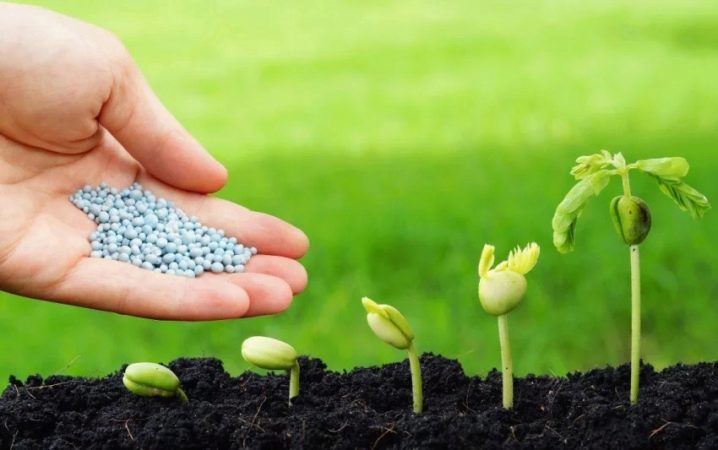
Saplings
In cold regions, chickpeas can also be grown as seedlings. Anyone can cope with this task. The scheme for growing seedlings looks very simple.
Planting seeds is carried out in the spring, 3-4 weeks before transplanting plants into open ground. It is best to use biodegradable containers for sowing seeds. The best option is modern peat pots. You can buy them at most gardening stores.
2-3 grains are planted in each container. Seeds are placed at a depth of 2-3 cm. This technology helps to grow several healthy seedlings at once. After their appearance on the site of the plant, it is necessary to thin out, removing weak greens. You need to cut off such sprouts with sharp scissors or garden pruning shears. Dig them out is not worth it. This can damage the chickpea root system.
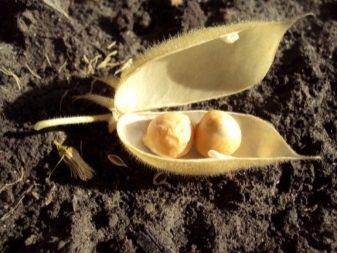
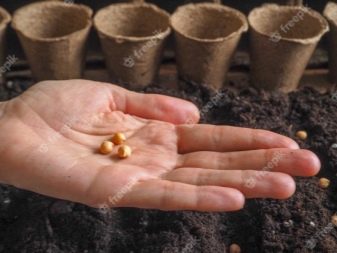
Chickpeas sprout very quickly. The first seedlings can be seen within a couple of days after sowing. The grown sprouts should be placed in a sunny area. It is best to store them on a balcony or windowsill. The soil in the pots should always be well moistened. It is recommended to spray it from a spray bottle. It is recommended to use warm and well-separated water for this.
Chickpea transplant also has its own characteristics. Plants grown in peat pots are usually planted in the soil with them... The holes for such seedlings are made deeper. After planting the plants in the soil, they are sprinkled with a thin layer of soil, and then watered abundantly. This helps the chickpeas take root in a short time.

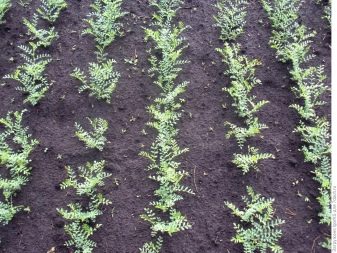
The nuances of care
In order to grow healthy plants in his area, the gardener should provide him with proper care. Chickpea agricultural technology consists of the following stages.
-
Loosening... In order for moisture to reach the roots of plants faster, the soil next to them must be loosened regularly. It is especially important to do this after watering or after rain. In the process, it is also necessary to remove any weeds growing nearby. In this case, the chickpeas will receive all the nutrients it needs.
-
Pest control... The site must be protected from various insects. For prevention, the site can be treated with chemicals or folk remedies. In autumn, it is important to clean it from plant residues and debris. As a rule, chickpeas get sick and are very rarely affected by pests. Therefore, gardeners usually do not have problems with caring for plants.
-
Watering... Regular watering of the plants helps to increase the yield of chickpeas. Water the bushes if the summer is hot.This is usually done not more often than once every two weeks.
-
Top dressing... There is no need to feed the plants in different vegetative phases. Fertilizers are usually embedded in the soil before planting. There is no need to feed the plants in the future. But, if chickpeas are grown on poor soil, it should be fertilized 1-2 times per season. Rotten compost can be used to feed the plant.
-
Mulching... Chickpea beds can be covered with a layer of mulch. This will help protect them from pests. In addition, moisture in the soil will last longer. At the same time, the mulch layer should not be too thick. If possible, it should be updated from time to time. For mulching chickpeas, you can use dry grass, straw, or dried weeds.

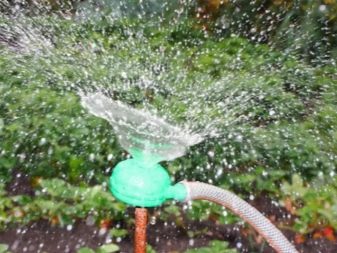
In general, chickpeas do not need much care. Therefore, even busy gardeners can grow it on their site.
Harvesting
Separately, it is worth talking about harvesting. You can harvest chickpeas in August. At this time, the grains are fully ripe, and the lower leaves begin to turn yellow and fall off. You can determine the ripeness of chickpeas by sound. If the pods are shaken, the grains rolling inside will make a loud rattling sound. They open very easily.
Having noticed these signs, you can start harvesting. Chickpeas are usually harvested in 2-3 passes. It is most convenient to do this in the evening, when it is no longer so hot outside.
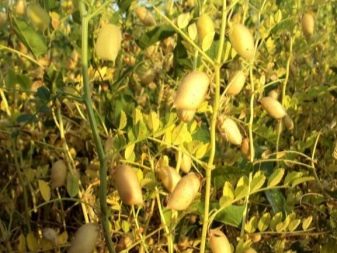
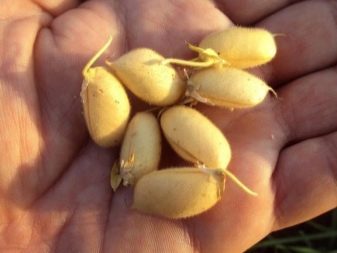
The grains must be removed from the pods and slightly dried. This is best done outdoors. At the same time, it is important to protect plants from birds. To do this, they can be covered with a canopy. After harvesting and drying the crop, it must be cleaned of debris and spoiled seeds.
It is necessary to store grains in containers with sealed lids. It is best to keep the chickpeas in a cool place at all times. The product is stored dry for about a year. To prevent pests from growing in containers, the contents of the containers must be checked from time to time.
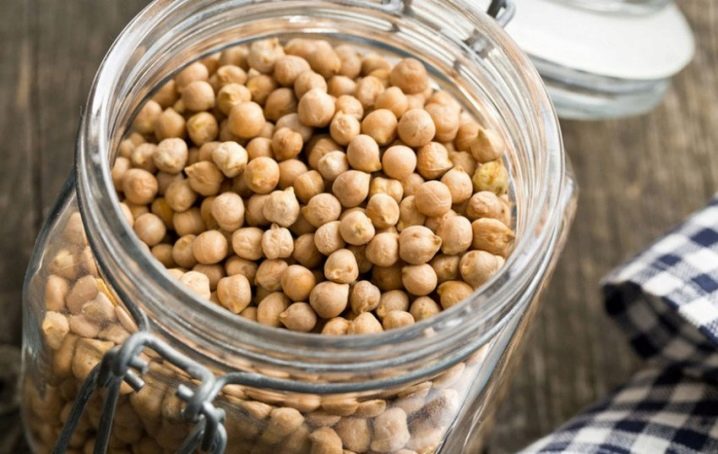
Dried chickpeas have a pleasant taste. Therefore, it is actively used for the preparation of various dishes. You can cook it in the following ways.
-
Fry... In order for fried chickpea dishes to be really tasty, dried peas must be soaked. The grains that have increased several times are fried for only 2-3 minutes. This should be done in a frying pan with vegetable oil. The chickpeas prepared in this way have a very pleasant taste.
-
Use for making salads. It is recommended to germinate the chickpeas before cooking. From such products, it turns out to cook tasty and healthy dishes. You can use them at any time of the day.
-
To cook... Chickpeas are cooked like regular peas. The cooked product can be added to soups or used to make soup or hummus. Such a product is prepared both in a saucepan and in a pressure cooker or multicooker. When cooked, the product can be stored in the refrigerator for 1-2 days. After that, it must be eaten or processed immediately. If this is not possible, the product should be placed in the freezer. There he can lie for several months. Frozen chickpeas are commonly used to make pies or hummus.
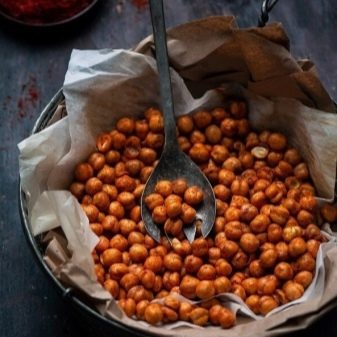
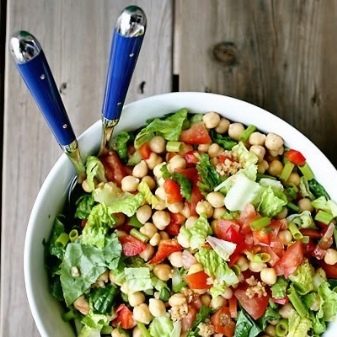
Chickpeas are also suitable for making all kinds of scrubs and masks. If a person plans to breed this crop, healthy seeds can be used for planting next year.
To summarize, we can say that chickpeas are the kind of plant that really deserves the effort spent on growing it.













The comment was sent successfully.